
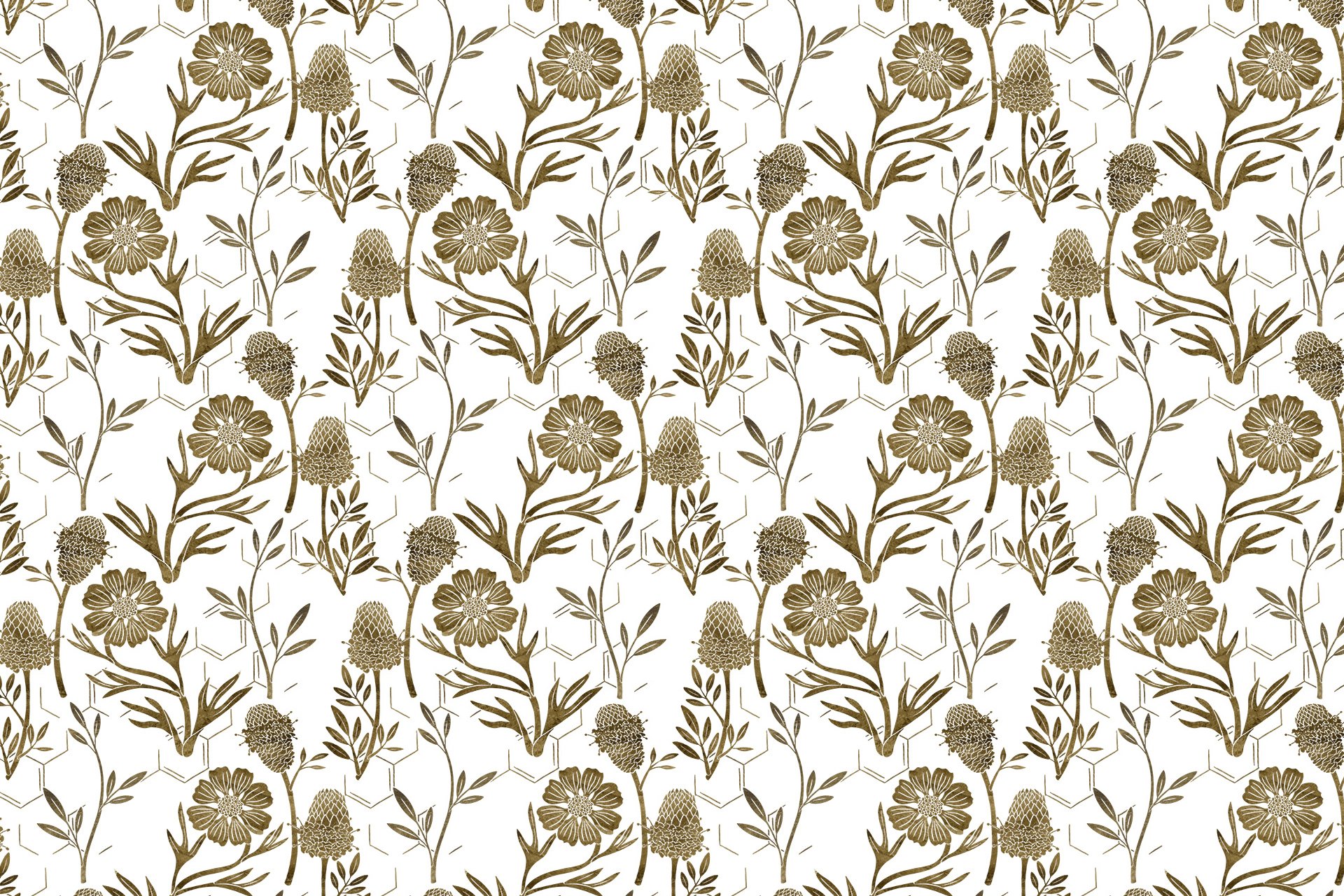
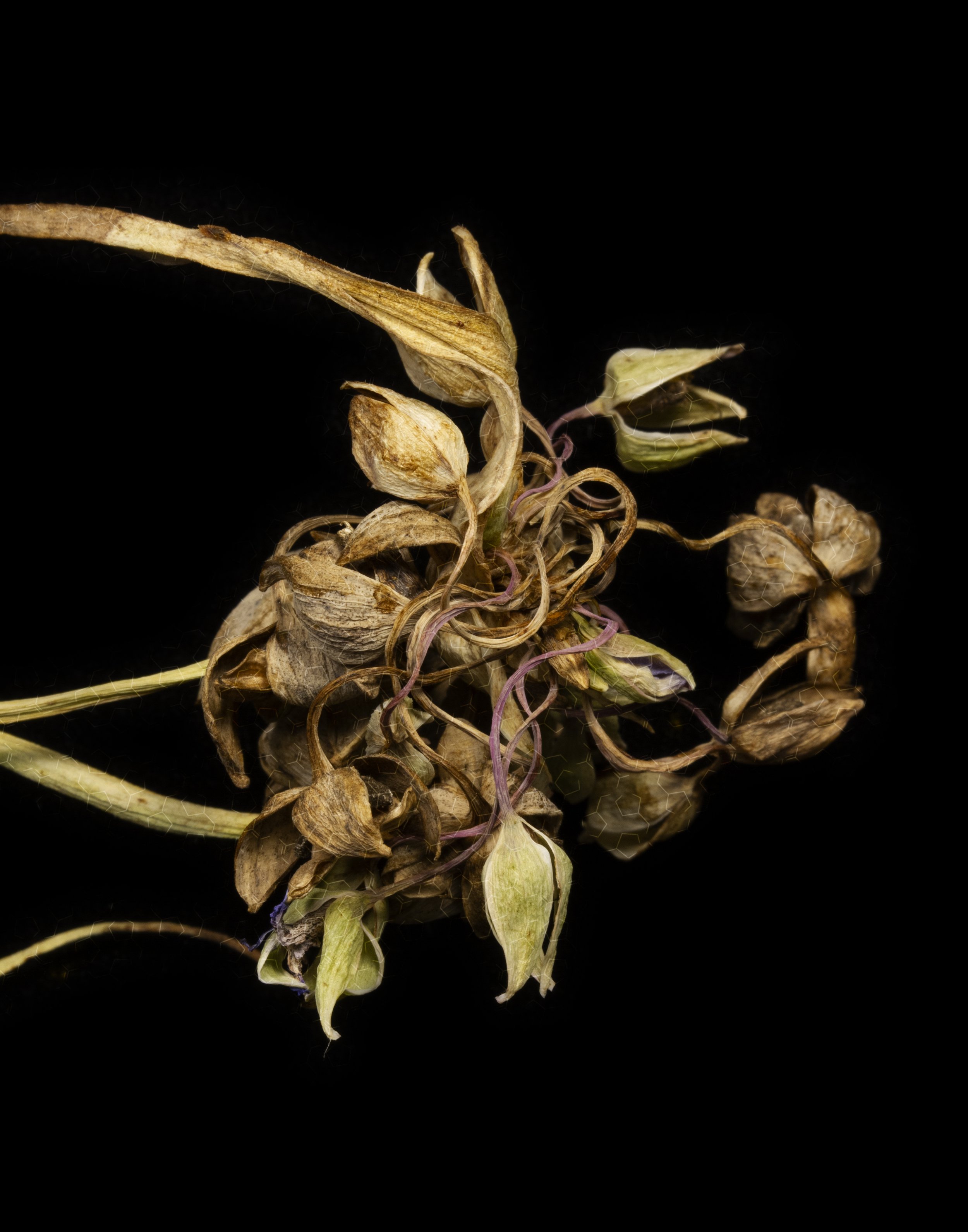
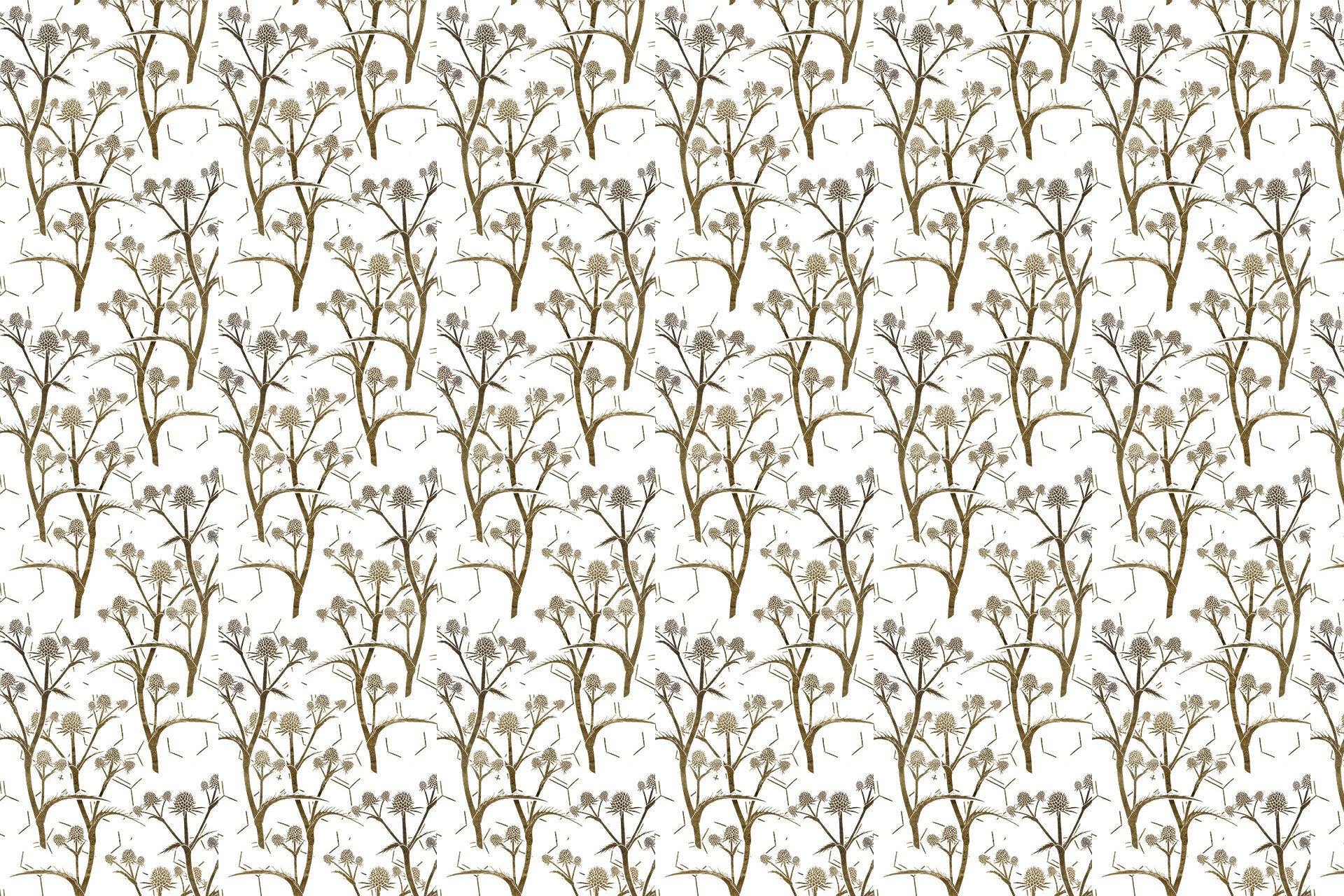
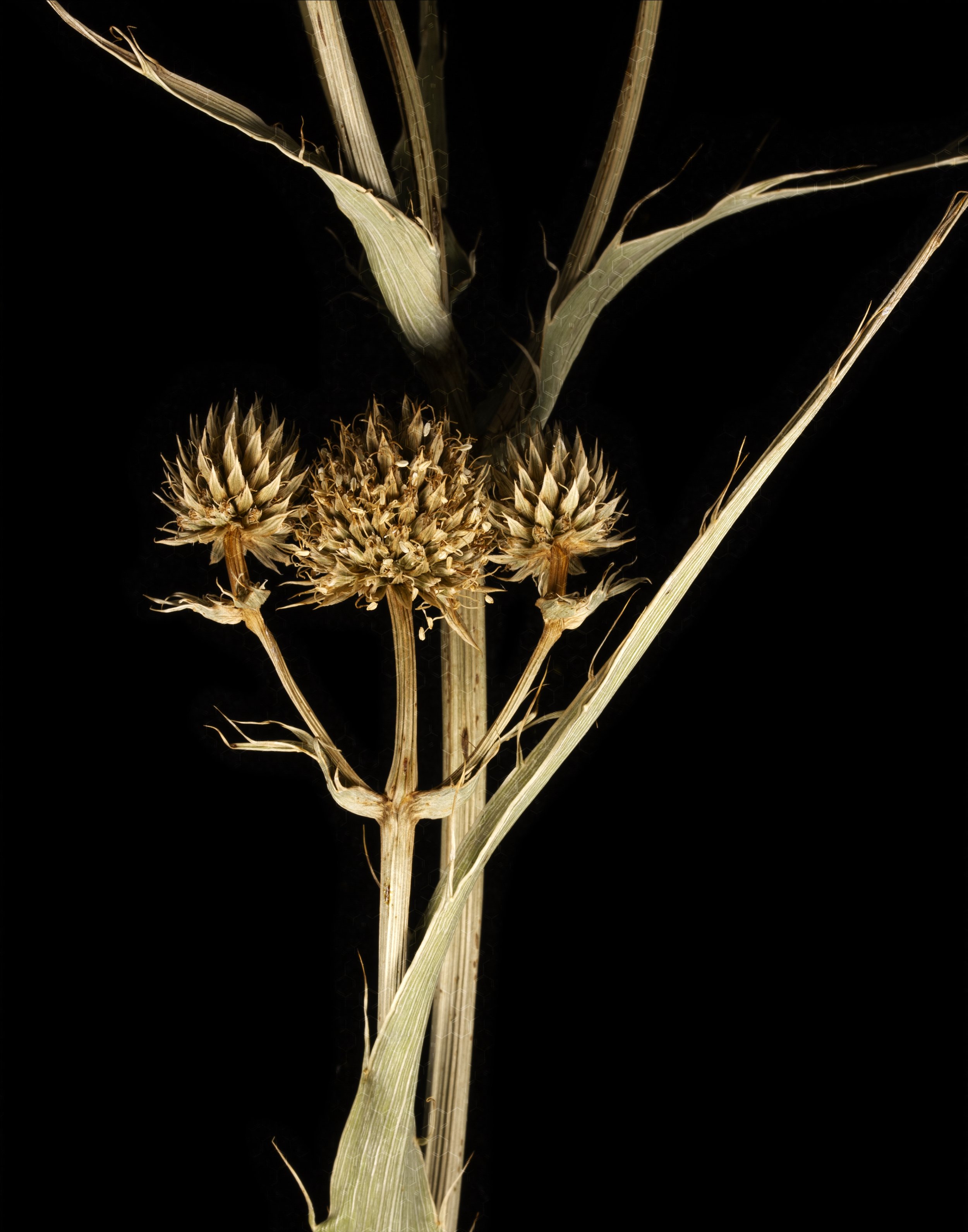
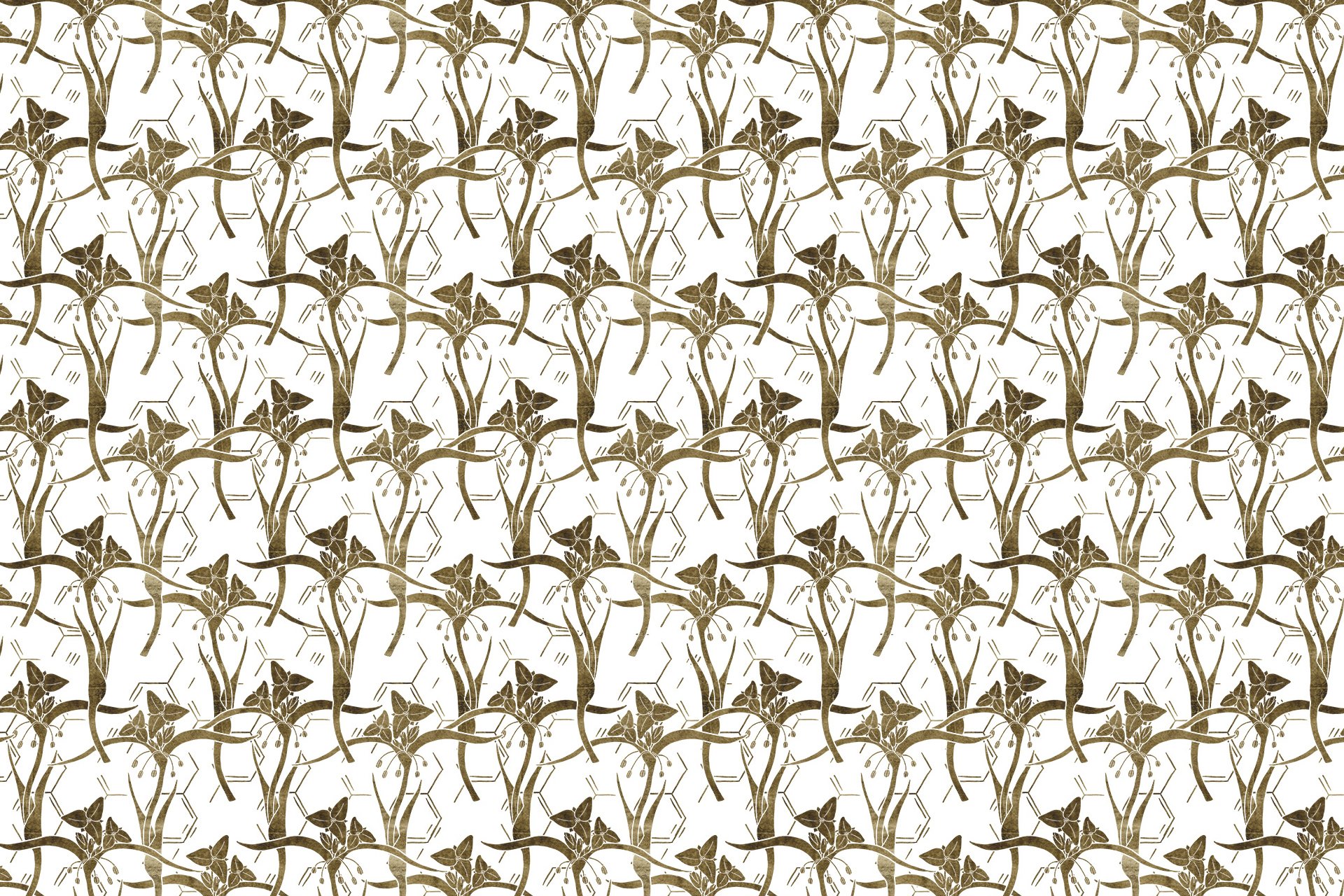
Cover:
All images courtesy of the artist.
Artist Statement
In 2021, I returned to my home state as an artist-in-residence at the Tallgrass Prairie Center on the University of Northern Iowa campus. During my residency, I explored prairie restoration sites and, unexpectedly, Victorian-era township cemeteries, which house some of the few remaining tallgrass prairie remnants in Iowa. Among the weathered, intricate headstones, I encountered descendants of the 0.1% of surviving prairie plant species and the biodiversity that depends on them. This paradox of finding life within spaces of death and mourning felt profound and inescapable.
Though I was already aware of the rapid decline of Iowa’s prairie ecosystem, seeing these remnants in person evoked an unexpected, layered grief. I grew up in northeastern Iowa, yet I had never really experienced a prairie. Engaging with these fragile remnants felt like connecting with an ancestor lost before my time. The genealogy of the plants and the history that had relegated them to these quiet places brought fresh purpose to my residency. With each new site I visited, I became more curious about the broader story of Iowa’s settlement and the Victorian cultural norms of that era, particularly how outward expressions of grief and elaborate mourning rituals mirrored their deepened relationship with nature. I was struck by the era’s ornate patterns and detailed decorations, which celebrated flora and fauna on every imaginable surface in a home. It’s suggested that the Victorians, grappling with the rapid industrialization that threatened natural spaces, collected and adorned their lives with nature’s imagery as an expression of grief and preservation.
For this exhibition, I adopted this lens, allowing my own ecological anxieties and grief about the disappearing prairie ecosystem, the challenges of restoration, declining pollinator populations, and the pervasiveness of harmful pesticides to inform my work.
The pieces in this show are created using photos, videos, plant specimens, seeds, prairie soil, and ash from prairie burns conducted by the Tallgrass Prairie Center. I am deeply grateful to the TPC staff for their time, expertise, and generosity, which made this work possible. Their commitment to preserving the prairie ecosystem is vital—please consider supporting their invaluable efforts.
Erin Anfinson is a Professor of Art at Middle Tennessee State University, where she teaches courses in drawing, design, and digital art within the Foundations program. Her work, which often incorporates encaustic-infused collage and animation, is inspired by her deep interest in science, conservation, natural history, and the evolving narratives of ecosystems in flux.
Anfinson has completed multiple artist residencies with the National Park Service and, most recently, at the Tallgrass Prairie Center at the University of Northern Iowa. These residencies deeply influenced her artistic practice, inspiring pieces that reflect on discovery, awareness, and the loss of native ecosystems.
Her work has been exhibited both nationally and internationally in galleries, museums, and film festivals, including shows at the Waterloo Center for the Arts (IA), Gadsden Museum of Art (AL), The Frist Museum (TN), and the Krakow International Green Film Festival (Poland). Anfinson has received numerous awards and grants, including those from the International Encaustic Artists organization and the Tennessee Arts Commission.
In addition to her creative practice and research, Anfinson regularly teaches mixed-media encaustic workshops at the Arrowmont School of Arts and Crafts in Gatlinburg, Tennessee, sharing her expertise with artists of all levels.

